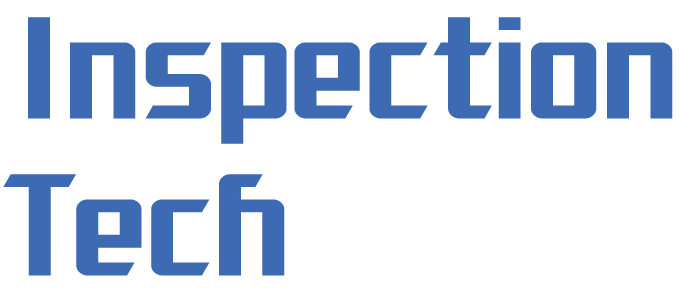Technical Library | 2023-11-20 18:49:11.0
Non-destructive testing during the manufacture of printed wiring boards (PWBs) has become ever more important for checking product quality without compromising productivity. Using x-ray inspection, not only provides a non-destructive test but also allows investigation within optically hidden areas, such as the quality of post solder reflow of area array devices (e.g. BGAs, CSPs and flip chips). As the size of components continues to diminish, today's x-ray inspection systems must provide increased magnification, as well as better quality x-ray images to provide the necessary analytical information. This has led to a number of x-ray manufacturers offering digital x-ray inspection systems, either as standard or as an option, to satisfy these needs. This paper will review the capabilities that these digital x-ray systems offer compared to their analogue counterparts. There is also a discussion of the various types of digital x-ray systems that are available and how the use of different digital detectors influences the operational capabilities that such systems provide.
Technical Library | 2016-05-30 22:24:00.0
As a part of series of studies on X-Ray inspection technology to quantify solder defects in BGA balls, we have conducted inspection of 3 level POP package by using a new AXI that capable of 3D-CT imaging. The new results are compared with the results of earlier AXI measurements. It is found that 3D measurements offer better defect inspection quality, lower false call and escapes.
Technical Library | 2010-09-16 18:45:06.0
With PCB complexity and density increasing and also wider use of 3D devices, tougher requirements are now imposed on device inspection both during original manufacture and at their subsequent processing onto printed circuit boards. More complicated and de
Technical Library | 2023-11-20 18:18:34.0
When x-ray inspection is used as part of a quality assurance program for any assembled device, steps must be taken early in the design stage to anticipate the use of x-ray inspection later in the development and production processes. This is a lesson that electronic assembly manufacturers learned years ago, and that medical device manufacturers are also discovering. There are several steps involved in learning how to interpret x-ray images, and how to design for x-ray inspection. First, manufacturers need to understand the nature of the x-ray shadow and its modalities; then they need to see how medical device developers and manufacturers are using x-ray inspection; finally, they need to consider taking measures early in the design process to ensure a clear, accurate image when the assembled device undergoes x-ray inspection.
Technical Library | 2023-11-20 17:36:58.0
With PCB complexity and density increasing and also wider use of 3D devices, tougher requirements are now imposed on device inspection both during original manufacture and at their subsequent processing onto printed circuit boards. More complicated and dense packages have more opportunities to exhibit defects both internal to the package as well as to the PCB. As components increase in complexity their cost increases, making counterfeiting them a potentially lucrative business for unscrupulous individuals and organizations.
Technical Library | 2017-06-22 17:11:53.0
C-mode scanning acoustic microscopy (C-SAM) is a non-destructive inspection technique showing the internal features of a specimen by ultrasound. The C-SAM is the preferred method for finding “air gaps” such as delamination, cracks, voids, and porosity. This paper presents evaluations performed on various advanced packages/assemblies especially flip-chip die version of ball grid array/column grid array (BGA/CGA) using C-SAM equipment. For comparison, representative x-ray images of the assemblies were also gathered to show key defect detection features of the two non-destructive techniques.
Technical Library | 2021-05-06 13:41:55.0
Quality control is of vital importance during electronics production. As the methods of producing electronic circuits improve, there is an increasing chance of solder defects during assembling the printed circuit board (PCB). Many technologies have been incorporated for inspecting failed soldering, such as X-ray imaging, optical imaging, and thermal imaging. With some advanced algorithms, the new technologies are expected to control the production quality based on the digital images. However, current algorithms sometimes are not accurate enough to meet the quality control. Specialists are needed to do a follow-up checking. For automated X-ray inspection, joint of interest on the X-ray image is located by region of interest (ROI) and inspected by some algorithms. Some incorrect ROIs deteriorate the inspection algorithm.
Technical Library | 2022-02-21 19:49:16.0
The ability to undertake non-destructive testing on semiconductor devices, during both their manufacture and their subsequent use in printed circuit boards (PCBs), has become ever more important for checking product quality without compromising productivity. The use of x-ray inspection not only provides a potentially non-destructive test but also allows investigation within optically hidden areas, such as the wire bonding within packages and the quality of post solder reflow of area array devices (e.g. BGAs, CSPs and flip chips).
Technical Library | 2023-11-20 17:42:33.0
Zero-defect strategies and increased demands on the production of assemblies are making quality assurance in electronics production increasingly important. Continous miniaturization of components, ever higher packing densities and the associated hard-to-view assembly areas, as well as the increased use of components such as BGAs, QFNs and QFPs, pose a considerable challenge when it comes to high-precision quality control.
Technical Library | 2014-12-18 17:22:34.0
Manufacturing technology faces challenges with new packages/process when confronting the need for high yields. Identifying product defects associated with the manufacturing process is a critical part of electronics manufacturing. In this project, we focus on how to use AXI to identify BGA Head-in-Pillow (HIP), which is challenging for AXI testing. Our goal is to help us understand the capabilities of current AXI machines.

Our Company handle AOI (Auto Optical Inspection) and SPI (Solder Paste Inspection) Machines.
Equipment Dealer / Broker / Auctions
Hwaseong-si, Gyeonggi-do, Korea
Hwaseong-si, South Korea
Phone: +82-1029254936